In Urs Fischer’s paintings, photos speak to us of the reality, and the painted brush strokes make up the mask, which is meant to create a balance between the real and the unreal, between what is obvious and what is hidden underneath. It is like one’s soul inside one’s body needing to be covered with skin and flesh, not to be completely overexposed. Urs Fischer’s brush strokes in each one of his paintings give you a feeling that they happened like a roar and then went completely silent. His brush strokes give you the feeling that you cannot redo them or imitate them. There is no detail there, no whisper — just a direct, loud scream of the artist’s brush stroke. In the end, the paintings themselves become the painted evidence to prove that it all really happened.
I think creation in art is of that godly moment, which you, for the very first time, with the help of the magic of the moment, create something never seen, never heard, never done before. It is actually that refreshing sense of the newness of that creation element which delights the viewer’s eyes.
Seeing Urs Fischer’s work, one realizes that it is true to believe that in art, size matters, for you really have to see the actual pieces in this exhibition to agree that looking at his work in the digital form does not do justice to them. The largeness of these oversized pieces create an air of magnificence and grandness for his work, whether they are the paintings or the fountains.
In the end, what really lingered with me as I was leaving the gallery, is, as I have been mentioning, Urs Fischer’s brush strokes. Powerful, stark-naked, raw, unprocessed, simple, and spontaneous, Fischer’s brush strokes are fast and sharp. They manage to pierce into the center of your art heart.
© Urs Fischer. Courtesy the artist and Gagosian Gallery.
Work photos: Photography by Mats Nordman.
Installation photos: Photography by Josh White/JWPictures.com
Gagosian Beverly Hills is pleased to announce an exhibition of sculptures and paintings by Urs Fischer. Constantly searching for new sculptural solutions, Fischer has an uncanny ability to envisage and produce objects undergoing psychic transformation in a bewildering range of materials. Compacting the real with the mimetic, order with disorder, he combines daring formal adventures in space, scale, and material with a mordant sense of humor. In recent years, Fischer has been exploring the genres of classical art history (still lifes, portraits, nudes, landscapes, and interiors) at the intersection with everyday life in cast sculptures and assemblages, paintings, digital montages, spatial installations, mutating or kinetic objects, and texts. As its title suggests, this exhibition is conceived around fully functional fountains, “active sculptures” that transform the galleries into humid and energized places through which viewers can wander, as if in a town square. The lumpen fountains are cast in bronze from hand-built clay models; the rims of the water basins are powder-coated white, while the base is left as raw roseate metal. In one gallery, a sort of roughly formed, almost naturalistic blowhole spouts water, splashing merrily and drowning out all other sound; in the other, water hisses from a misting ball, and spills down over two tiered basins.
A third fountain, also in cast bronze and delicately powder-coated in parts, is a human skeleton arched across a chair over which a draped garden hose gently flows—the latest in Fischer’s lexicon of darkly humorous vanitas.
Surrounding the fountains in the galleries are huge paintings in both portrait and landscape formats. The background of each painting is actually a photographic image of Fischer’s own face or features thereof, but where any temptation toward self-referentiality is pushed to near-obscurity or total
disintegration. These motifs are blown up and overlaid with silkscreened marks that were first painted or drawn by Fischer, in a palette alternately sober and vivid. Like the Problem Paintings before them, these layered images provide a fresh and subversive view through the clash of representational systems and different cosmic orders.Urs Fischer was born in Zurich in 1973, and lives and works in New York. His work is included in many important public and private collections worldwide. Selected solo exhibitions include “Kir Royal,” Kunsthaus Zurich (2004); “Not My House Not My Fire,” Espace 315, Centre Georges Pompidou, Paris (2004); “Mary Poppins,” Blaffer Gallery, Art Museum of the University of Houston, Texas (2006); “Marguerite de Ponty,” New Museum, New York (2009–10); “Oscar the Grouch,” Brant Foundation Art Study Center, Greenwich, Connecticut (2010–11); “Skinny Sunrise,” Kunsthalle Wien (2012); “Madame Fisscher,” Palazzo Grassi, Venice (2012); “Urs Fischer,” Museum of Contemporary Art, Los Angeles (2013); and “YES,” Deste Foundation Project Space, Slaughterhouse, Hydra, Greece (2013). Fischer’s work was included in the 2003, 2007, and 2011 Venice Biennales.
Tags: Art, Art Galleries, Art Museums, Exhibition, Gagosian, Gagosian Gallery, Urs Fischer
Posted in Art Reviews, Reviews |

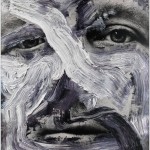
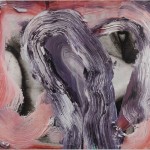
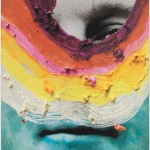
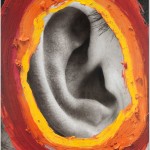
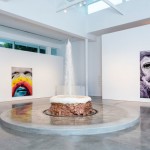
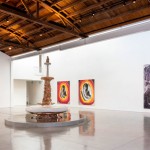
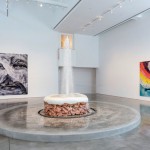


Leave a Reply